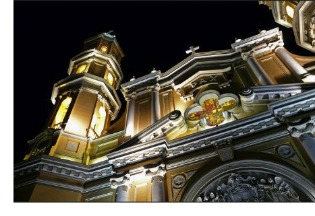| En
Español |
Home |
Search |
Nobility |
Trees |
Sources |
Articles |
|
How to Find Piura Church
Documents
We
have prepared three guides to assist members
of the Seminario and related families in
finding birth, marriage and death records for
their ancestors who lived in Piura,
Perú. Many of us have been frustrated at
not being able to find these records before
1900 because the church records have not been
digitized. We discovered that quite a
few of the records, especially for the
Cathedral of San Miguel Arcángel, are
available on microfilms that can be viewed
online via FamilySearch.org. The first guide covers what documents are available and how to find them. While it is oriented toward Piura documents, the same procedures can be used to find records for other locations that have been microfilmed but not yet digitized. The second document is a step-by-step guide to finding baptismal records quickly. If you know the exact date of the baptism, you can generally find the record quickly without using our guide. But if you know only an approximate date, or just the year, or even a range of years, our guide will enable you to find the document much more quickly and easily than going page by page through the old books. The guide looks a little complicated at first, but we encourage you to try it with two or three documents and you'll see how well it works. The third is a guide to finding marriage records quickly. It works the same way as our guide to baptismal records. List of church records already found on microfilm Since 2018, I have spent a fair amount of time searching in the microfilm records of Piura and Lima to locate documents that would confirm the identity of Seminarios and relatives listed in the trees on our site. When documents were located, extracts were created and added to the person's record in our database, accessible through our Search function. But in the course of the searches, I found records for many other Seminarios not included in the trees on this site. As these records may be helpful in creating or expanding your family tree, I prepared a list of their locations on microfilm. They are mostly for people born before 1800, since that is the focus of our site. I was unable to find people in our family's tree for some of the documents. I have included these records on the list, marked with an asterisk, as others may be able to find a place for them in their family trees. Guide to your first search of the microfilms on FamilySearch.org Our list above and our extracts cite microfilm references as: film number, image number and entry number. Our brief instructions say that the document can be viewed on FamilySearch.org, options Search>Catalog> Film Number, and that's good as far as it goes. But finding the document on microfilm can be frustrating at first because of the way that FamilySearch microfilms are organized and viewed. So, here is a step-by-step guide for the first time you look for a microfilmed document when you already have the film, image and entry numbers.
Bob Bordier, bob@noblezaseminario.com Written: May 7, 2018 Updated: April 19, 2020 |